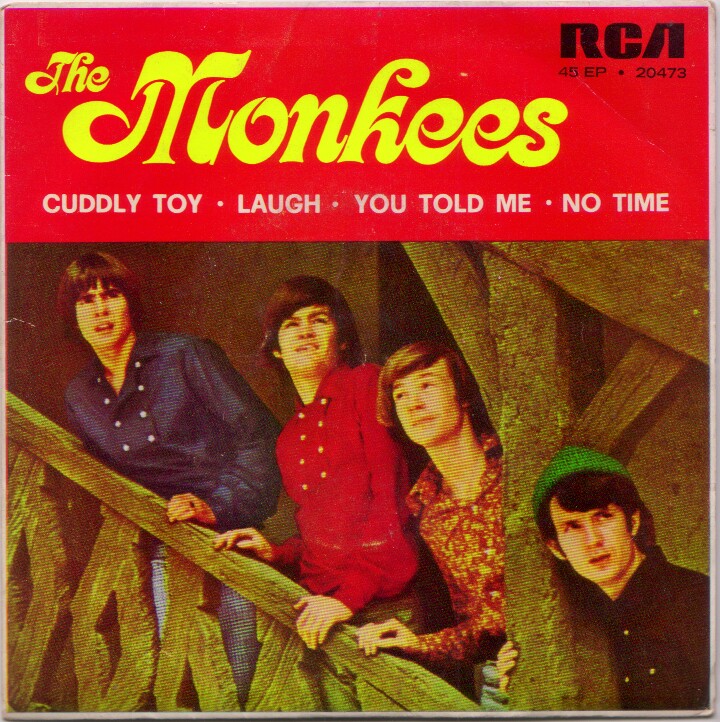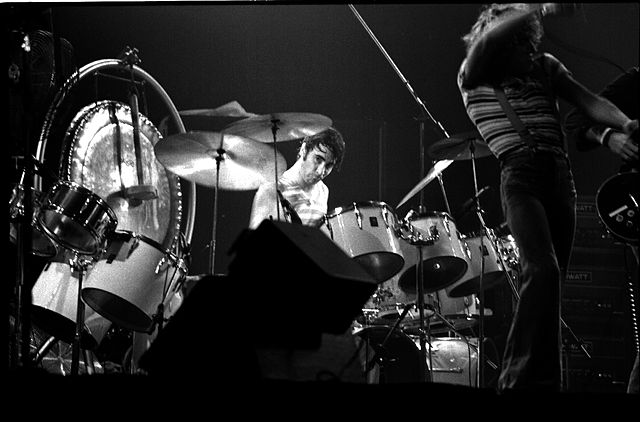Celebrating their 120th birthday this year, the BBC Promenade Concerts – universally known as “The Proms” – rank as the world’s biggest classical music festival. With 76 concerts, running from July to September, of which the vast majority focus on classical music, not only do the events reach a sizeable audience live in London’s Royal Albert Hall, or for the earlier daytime concerts, the Cadogan Hall, but there’s a much bigger audience for the nightly live broadcasts on BBC radio and for the highlights on television.
The post Jazz at the BBC Proms appeared first on OUPblog.
In celebration of The BBC Proms 120th anniversary we have created a comprehensive reading list of books, journals, and online resources that celebrate the eight- week British summer season of orchestral music, live performances, and late-night music and poetry.
The post Happy 120th birthday BBC Proms appeared first on OUPblog.
By Alyn Shipton
Singer-songwriter Harry Nilsson worked in the computer department of a California bank throughout the early 1960s. For much of that time, he managed the night shift, clocking on in the early evening and finishing around 1 a.m. Then, instead of going to sleep, he wrote songs all night. Being a man of considerable energy, he spent the daytime hawking his songs around publishers.
There were a few successes. He made a small number of single records himself, and some of his songs were picked up by others, including Phil Spector. He recorded some of them with the Ronettes and the Modern Folk Quartet, but failed to issue the discs at the time.
Then in March 1967, the Modern Folk Quartet’s bassist Chip Douglas began working as a producer for the Monkees. He invited Nilsson to come and demonstrate some of his songs, and the result was that the Monkees, with Davy Jones singing the lead vocal, recorded “Cuddly Toy”.

This became a hit, and Nilsson earned enough in royalties to be able to quit his job at the bank, and begin his own career as a singer. The song also marked the beginning of a long friendship with the Monkees, and particularly Micky Dolenz and Davy Jones, who would, many years later, star in the London stage production of Nilsson’s fantasy musical “The Point”.
In between, there was plenty more music. Nilsson penned “Daddy’s Song” for the Monkees movie Head, and he and Davy Jones appeared together singing in television commercials. There was horseplay in the Los Angeles studios of RCA, when the Monkees and Nilsson found themselves in adjacent booths, recording for the label. And there was hanging out together, as Nilsson would do at Dolenz’s Laurel Canyon home, thinking up ideas for songs, playing parlor games, and having the occasional drink or seven. Nilsson and Micky became such close buddies, that when Nilsson went to Ireland to meet his prospective wife’s parents, Micky came along as well. Micky was also one of the many rock stars who borrowed Nilsson’s London apartment (that would later become infamous when both Mama Cass and Keith Moon died there).
Although he was perhaps more famous for his associations with John Lennon and Ringo Starr, Nilsson was equally involved with “America’s answer to the Beatles”.
Alyn Shipton is the award-winning author of many books on music including Nilsson: The Life of a Singer-Songwriter, A New History of Jazz, Groovin’ High: the Life of Dizzy Gillespie, and Hi-De-Ho: The Life of Cab Calloway. He is jazz critic for The Times in London and has presented jazz programs on BBC radio since 1989. He is also an accomplished double bassist and has played with many traditional and mainstream jazz bands.
Subscribe to the OUPblog via email or RSS.
Subscribe to only music articles on the OUPblog via email or RSS.
Image credit: Monkees disc cover via 45cat.
The post Harry Nilsson and the Monkees appeared first on OUPblog.

By Alyn Shipton
When Harry Nilsson took a call on 7 September 1978 to tell him that the Who’s drummer Keith Moon had been found dead in Nilsson’s London apartment, it was a shock for two reasons. Firstly, Moon was the second star to die in the flat, the first having been Mama Cass, who had also borrowed it as a temporary London home. Secondly, after years of carousing together, it was impossible to believe that Moon’s iron constitution had finally succumbed to a lifetime of drink, drugs, and general excess. He had seemed indestructible, recovering from collapses on stage, gargantuan hangovers, accidental overdoses, and a myriad of events that would be stressful and difficult for anyone else — from fisticuffs to motor accidents.
Nilsson had met Moon as part of a circle of hard-drinking London friends, including Marc Bolan, Graham Chapman (of Monty Python), and Nilsson’s long-term buddy Ringo Starr. They would meet in mid-afternoon, drink brandy for six or seven hours, and then make their way to Tramp, the exclusive nightclub for more brandy and excitement. Their friendship blossomed during the making of Nilsson’s “Pussy Cats” album in Los Angeles, where as well as contributing some percussion tracks to the album (produced by John Lennon during his “lost weekend”) Moon was a fellow tenant of a beach house in Santa Monica. Lennon, Starr, Nilsson, bassist Klaus Voormann, and various of the other musicians moved in there with the idea of developing musical ideas by day and recording late into the night. What actually happened was days spent recovering from nights on the town, a round of drink and drugs in the afternoon, and then sporadic action in the studio at night. Nilsson’s voice deteriorated, and had to be re-recorded later in New York, but the partying continued unabated until Lennon called a halt to the sessions, realising the album was getting nowhere fast.

Keith Moon on drums. The WHO, MLG, Toronto, 21 October 1976. photo by Jean-Luc. Creative Commons License via Wikimedia Commons.
However, from then on Moon and Nilsson were inseparable, whenever their respective musical schedules brought then to the same town at the same time. They often stayed together at Nilsson’s Curzon Place apartment, trying their hands at cooking (“everything came out a sort of grey mess,” Nilsson recalled) and even on one occasion attempting a weekend of sobriety. There were adventures on the Isle of Wight when Starr was filming “That’ll Be the Day” — Moon arrived, in style, by landing a helicopter on the roof of the hotel where the cast was staying. There were more attempts at recording together, and there were endless parties, including one at which Moon punched a hole in the wall of a London hotel while giving actor Peter Sellers a lesson in unconventional methods of opening bottles of booze.
The musical empathy between Nilsson and Moon is best seen in action in the somewhat bizarre musical sequences from Starr’s movie “Son of Dracula”. Although the band is miming on screen, Nilsson in full vampire costume as “Count Downe” pounds the piano and sings, as Moon thrashes away at the drums. The glances between them show them enjoying a sense of being fellow conspirators in musical mayhem, ably assisted on screen by Peter Frampton on guitar and Klaus Voormann on bass. Mostly, of course, Moon will be remembered for his highly individual drumming with the Who, but his moments on record and on screen with Nilsson are particularly poignant, given the unexpected nature of his death exactly 35 years ago today.
Alyn Shipton is the award-winning author of many books on music including Nilsson: The Life of a Singer-Songwriter, A New History of Jazz, Groovin’ High: the Life of Dizzy Gillespie, and Hi-De-Ho: The Life of Cab Calloway. He is jazz critic for The Times in London and has presented jazz programs on BBC radio since 1989. He is also an accomplished double bassist and has played with many traditional and mainstream jazz bands.
Subscribe to the OUPblog via email or RSS.
Subscribe to only music articles on the OUPblog via email or RSS.
The post Keith Moon thirty-five years on appeared first on OUPblog.

By Michelle Rafferty

What made Louis Armstrong embarrassed? Why was Cab Calloway on Sesame Street? To learn a little more about these two legends check out the podcast below with BBC Producer Alyn Shipton and the talented interviewer Annie Shipton (yes, that would be Alyn’s daughter).
Happy JAM (Jazz Appreciation Month)!
More Sesame Street…Cab teaches us how to jump AND jive:
Click here to view the embedded video.
To read up on Cab Calloway check out Alyn Shipton’s biography
Hi-De-Ho: The Life of Cab Calloway. And for cool footage from Gail Levin’s new documentary
Cab Calloway: Sketches go
here!






